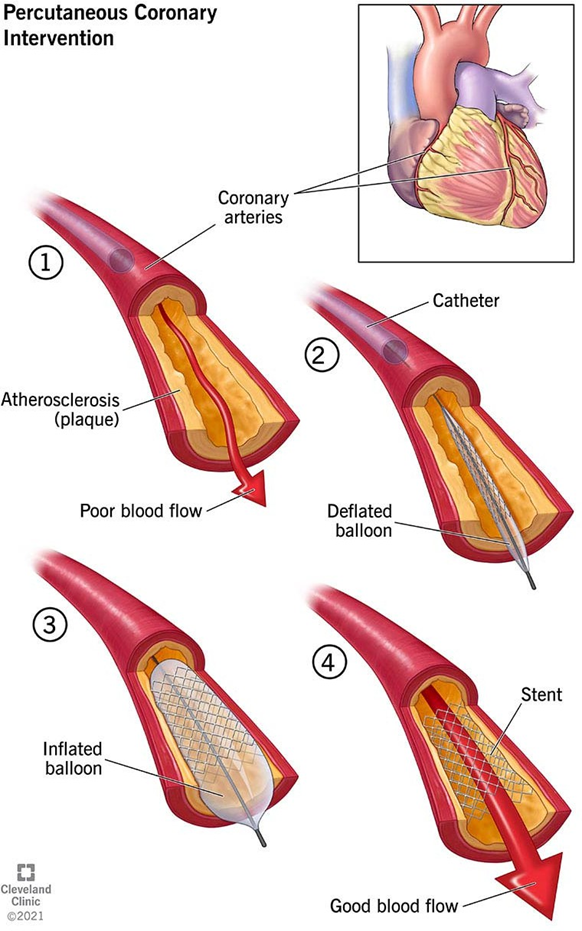The nurse is caring for a client with weak pedal pulses, absent hair on bilateral legs, and a full-thickness wound on the right lateral malleolus with defined margins, including a minimal amount of serous exudate.
Which of the following interventions is contraindicated?
Assess the need for smoking cessation.
Apply TED hose to bilateral legs.
Consult physical therapy.
Obtain Ankle-Brachial Index (ABI) with a hand-held Doppler.
The Correct Answer is B
Choice A rationale
Assessing the need for smoking cessation is a standard part of nursing care, especially for patients with circulatory issues. Smoking can exacerbate circulatory problems and delay wound healing.
Choice B rationale
Applying TED hose to bilateral legs might not be appropriate for this patient. TED hose are compression stockings designed to prevent deep vein thrombosis and promote circulation.
However, in a patient with weak pedal pulses and a full-thickness wound on the leg, the compression from the stockings could potentially worsen circulation to the area and impede wound healing.
Choice C rationale
Consulting physical therapy could be beneficial for this patient. Physical therapists can provide exercises and interventions to improve circulation and mobility, which could help with the patient’s circulatory issues and wound healing.
Choice D rationale
Obtaining an Ankle-Brachial Index (ABI) with a hand-held Doppler could be useful in this situation. The ABI is a simple, non-invasive test that can help diagnose peripheral artery disease (PAD), a condition that could be causing the patient’s weak pedal pulses and wound healing issues.
Nursing Test Bank
Naxlex Comprehensive Predictor Exams
Related Questions
Correct Answer is C
Explanation
Choice A rationale
Bradycardia, palpitations, confusion, and truncal rash are not typically associated with septic shock. Septic shock is a severe infection that occurs when bacteria enter the bloodstream. It can cause organs to fail and can lead to death.
Choice B rationale
Severe respiratory distress, jugular venous distention, and chest pain are more commonly associated with conditions like heart failure or pulmonary embolism, not septic shock.
Choice C rationale
Low blood pressure and tachycardia are common symptoms of septic shock. This happens because the body’s response to the infection causes blood vessels to dilate, which can lower blood pressure. The heart rate often increases (tachycardia) in an attempt to maintain blood flow to the organs.
Choice D rationale
Reduced cardiac output, increased systemic vascular resistance, and a moist cough are not typical symptoms of septic shock. These symptoms are more commonly associated with conditions like heart failure.
Correct Answer is D
Explanation
Choice A rationale
Exercise electrocardiography, also known as a stress test, is not typically the first-line emergent procedure for a patient with an acute myocardial infarction (AMI). This test is often used to diagnose coronary artery disease, but it is not typically used to treat an AMI5.
Choice B rationale
A computed tomography (CT) scan of the chest with contrast could be used to visualize the heart and surrounding structures, but it is not typically the first-line emergent procedure for a patient with an AMI5.
Choice C rationale
An echocardiogram could be used to visualize the heart’s structure and function, but it is not typically the first-line emergent procedure for a patient with an AMI5.
Choice D rationale
Percutaneous coronary intervention (PCI) is the correct answer. This procedure is often used as an emergent treatment for an AMI. It involves using a catheter to place a small structure called a stent to open up blood vessels in the heart that have been narrowed by plaque buildup.

Whether you are a student looking to ace your exams or a practicing nurse seeking to enhance your expertise , our nursing education contents will empower you with the confidence and competence to make a difference in the lives of patients and become a respected leader in the healthcare field.
Visit Naxlex, invest in your future and unlock endless possibilities with our unparalleled nursing education contents today
Report Wrong Answer on the Current Question
Do you disagree with the answer? If yes, what is your expected answer? Explain.
Kindly be descriptive with the issue you are facing.
